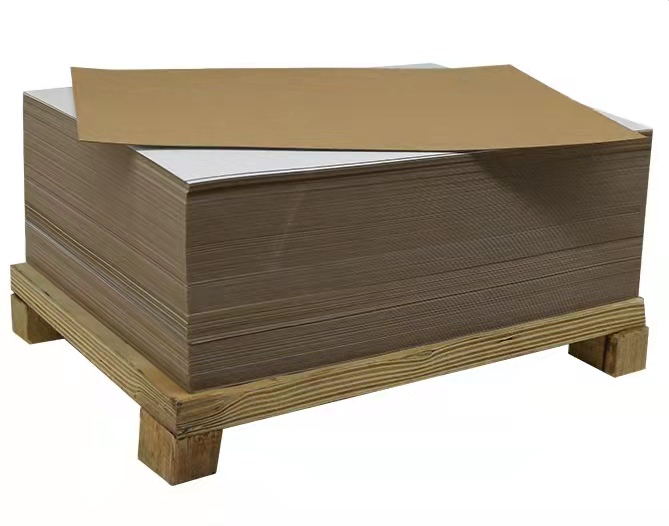- Home
- Innovative Packaging Solutions for Furniture Products Using Eco-Friendly Materials
Nov . 09, 2024 03:52 Back to list
Innovative Packaging Solutions for Furniture Products Using Eco-Friendly Materials
Paper Wrap for Furniture Products An Eco-Friendly Solution
In recent years, the furniture industry has witnessed a significant shift towards sustainability and eco-friendliness. As consumers become more aware of their environmental impact, manufacturers are exploring innovative ways to reduce waste and embrace greener practices. One of the most promising developments in this pursuit is the introduction of paper wrap for furniture products. This novel packaging solution not only offers a sustainable alternative to traditional plastic and foam materials but also enhances the overall customer experience.
The Need for Sustainable Packaging
The furniture industry has long relied on plastic and polystyrene foams for packaging, contributing to significant environmental pollution. These materials, which are often non-biodegradable, pose a challenge in terms of disposal and recycling. With increasing regulations around plastic waste and a rising tide of consumer demand for sustainable options, furniture manufacturers are compelled to seek alternative packaging solutions that align with eco-friendly practices.
In this context, paper wrap emerges as a highly viable option
. Derived from renewable resources, paper is biodegradable and recyclable, making it a sustainable choice for packaging furniture products. This shift not only addresses environmental concerns but also reflects a growing corporate responsibility within the industry.Benefits of Paper Wrap
1. Sustainability Unlike plastic packaging, which can take centuries to decompose, paper wrap breaks down naturally within a few months. This transition to paper contributes to reducing landfill waste and pollution, aligning with global sustainability goals.
2. Protection and Cushioning Despite being lightweight, paper wrap can provide adequate protection to furniture items during transit and storage. With innovations in paper technology, manufacturers can now create wraps that offer cushioning effects similar to those of traditional foam materials. The ability to customize paper wrap thickness and texture allows for tailored protection suited to various types of furniture.
paper wrap for furniture products

3. Branding and Aesthetics Paper wrap can serve as an excellent platform for branding. Furniture companies can print their logos and marketing messages directly on the wrap, enhancing brand visibility while maintaining an eco-friendly image. Additionally, the natural appearance of paper can lend a sophisticated and rustic aesthetic, appealing to modern consumers who value design and sustainability.
4. Cost-Effectiveness While there may be an initial investment in switching to paper wrap, the long-term benefits can outweigh these costs. As the demand for sustainable products increases, companies that adopt paper packaging may gain a competitive edge in the marketplace. Furthermore, the reduction in waste disposal costs and the potential for recyclable material may contribute to overall savings.
Challenges and Considerations
Despite its many benefits, transitioning to paper wrap is not without challenges. Manufacturers must consider the protective capabilities of paper for heavy or fragile items, as well as its susceptibility to moisture and tear. Innovations such as water-resistant coatings or enhanced structural designs can address these issues, ensuring that paper wraps can adequately protect furniture under various shipping conditions.
Moreover, supply chain logistics play a crucial role in the successful implementation of paper wrap. Sourcing sustainable paper from responsible suppliers is essential to ensure that the environmental benefits are not compromised. Companies must also invest in training for employees to manage the new packaging processes effectively.
Conclusion
The move towards paper wrap for furniture products signifies a positive trend in the industry—a step towards more sustainable practices and greater environmental responsibility. As consumers increasingly prioritize eco-friendly products, manufacturers who embrace innovative packaging solutions like paper wrap can cater to this demand while reducing their ecological footprint.
In the years to come, the furniture industry will continue to evolve, exploring new materials and solutions that prioritize sustainability. The adoption of paper wraps is just one facet of a larger movement towards responsible manufacturing and consumption. By fostering innovations that respect the environment, the furniture industry not only preserves its natural resources but also lays the groundwork for a greener, more sustainable future.
Latest news
-
High-Quality Bathroom Cabinet Contact Paper – Durable & Stylish Leading Suppliers, Exporters, Manufacturers
NewsJul.08,2025
-
Premium Wood Contact Paper for Desk – Reliable Suppliers & Exporters
NewsJul.08,2025
-
Premium Contact Paper for Table Top – Durable & Stylish Surface Solution from Leading Manufacturer
NewsJul.07,2025
-
Duplex Board with Grey Back - Reliable Supplier & Competitive Price Manufacturer & Exporter
NewsJul.07,2025
-
Premium White Contact Paper on Cabinets – Trusted Exporters & Suppliers
NewsJul.06,2025
-
High-Quality Duplex Board Packaging for Food Reliable Manufacturer & Supplier
NewsJul.06,2025

